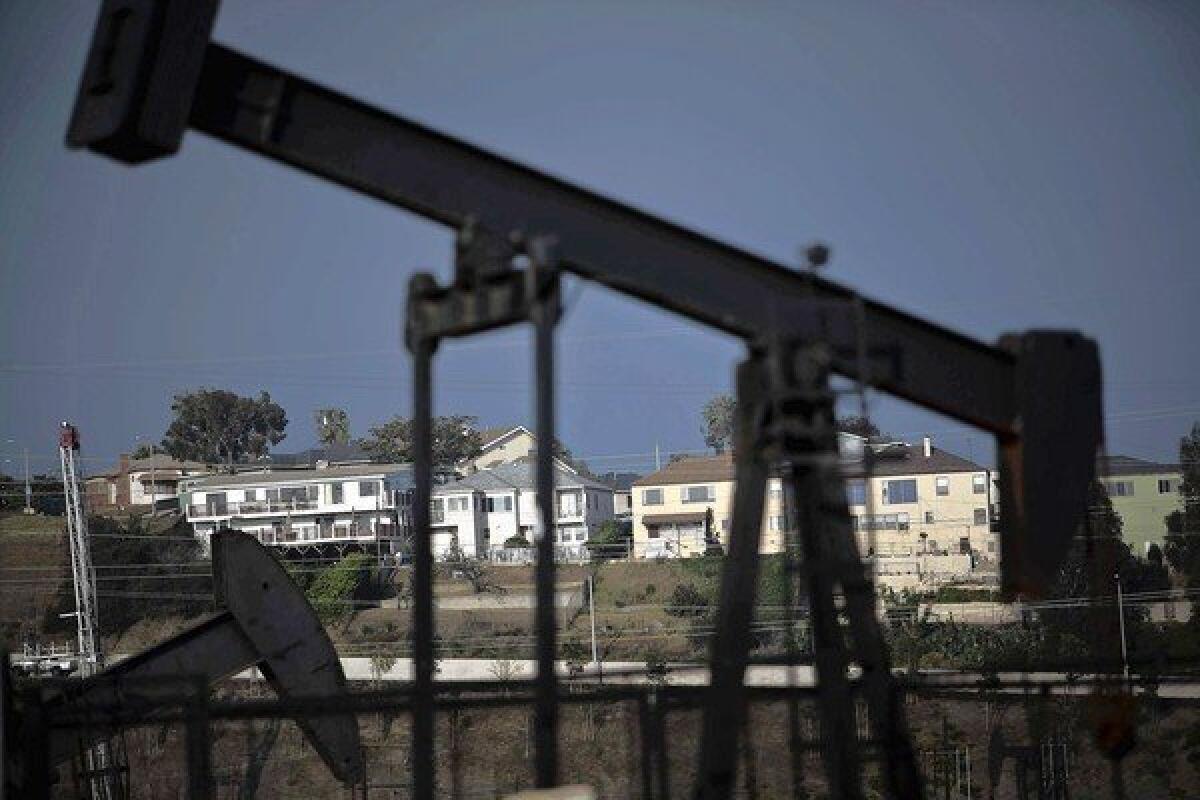Study on fracking in Baldwin Hills area to be released next month

- Share via
A much-anticipated report that evaluates the potential effect of a controversial process called hydraulic fracturing, or fracking, on the Baldwin Hills area is scheduled to be released next month, officials confirmed this week.
The study was launched a year ago at the 1,200-acre Inglewood Oil Field, which is owned and operated by Plains Exploration & Production Co., and completed in July.
The news comes on the eve of Saturday’s planned rally in Culver City to call on lawmakers to ban fracking, a technique that fractures rock formations to release trapped oil and natural gas. The process involves a high-pressure injection of water, sand and chemical additives into a drill site’s wellbore.
Fracking has come under scrutiny, however, amid allegations that it increases seismic activity and that it contaminates water supplies.
Located two miles south of the 10 Freeway, the field is surrounded by a handful of communities, including Culver City, Baldwin Hills and Inglewood — making it the largest urban oil field in the country. Plains Exploration is hoping to tap into the oil reserves in the field’s shale formations identified in 2003.
Residents say their properties have been damaged by mysterious land shifts, and that has increased their fears about the use of fracking. Some homeowners say they suspect the movements may be related to drilling operations. The cause is unclear, however, given that the area sits on top of the Newport-Inglewood fault.
Still, environmental and community groups like Food & Water Watch and Citizens Coalition for a Safe Community are trying to stop Plains Exploration from using the technique, and are calling on state lawmakers to ban the practice.
“There are numerous non-industry-funded studies and documentation from around the country that have shown the severe impacts fracking has on our air, water and land,” said Brenna Norton of Food & Water Watch. “The fracking process is too dangerous and too risky to ever be properly regulated and that’s why we’re calling for a ban on fracking in California.”
But proponents of fracking say the procedure is safe and has been used since the 1950s. They argue that there are no proven cases of underground water contamination being tied to fracking and that U.S. Geological Survey scientists have found no direct link between seismic activity and the technique. In fact, oil experts note that in a recent USGS study, seismologist Bill Ellsworth said that increased earthquakes are related to wastewater disposal wells.
“The people who demand that this technology should be banned occupy the fringes of the debate over energy policy in this country, and they care more about their anti-industry ideology than they do about facts,” said Dave Quast of Energy in Depth, a research and public outreach organization supported by the Independent Petroleum Assn. of America.
The Plains Exploration study is part of a settlement the company reached last year with community and environmental groups.
Daniel Tormey, environmental sciences technical director at Cardno Entrix, organized the report on behalf of Plains Exploration and submitted it to an independent peer reviewer in August.
Company Vice President Steve Rusch said that once the report is completed, it would be the first of its kind in California. It is scheduled to be released Oct. 10.
“The study will be particularly timely in providing answers to the key questions most often raised about hydraulic fracturing,” Rusch wrote in a recent newsletter to residents.
More to Read
Sign up for Essential California
The most important California stories and recommendations in your inbox every morning.
You may occasionally receive promotional content from the Los Angeles Times.














